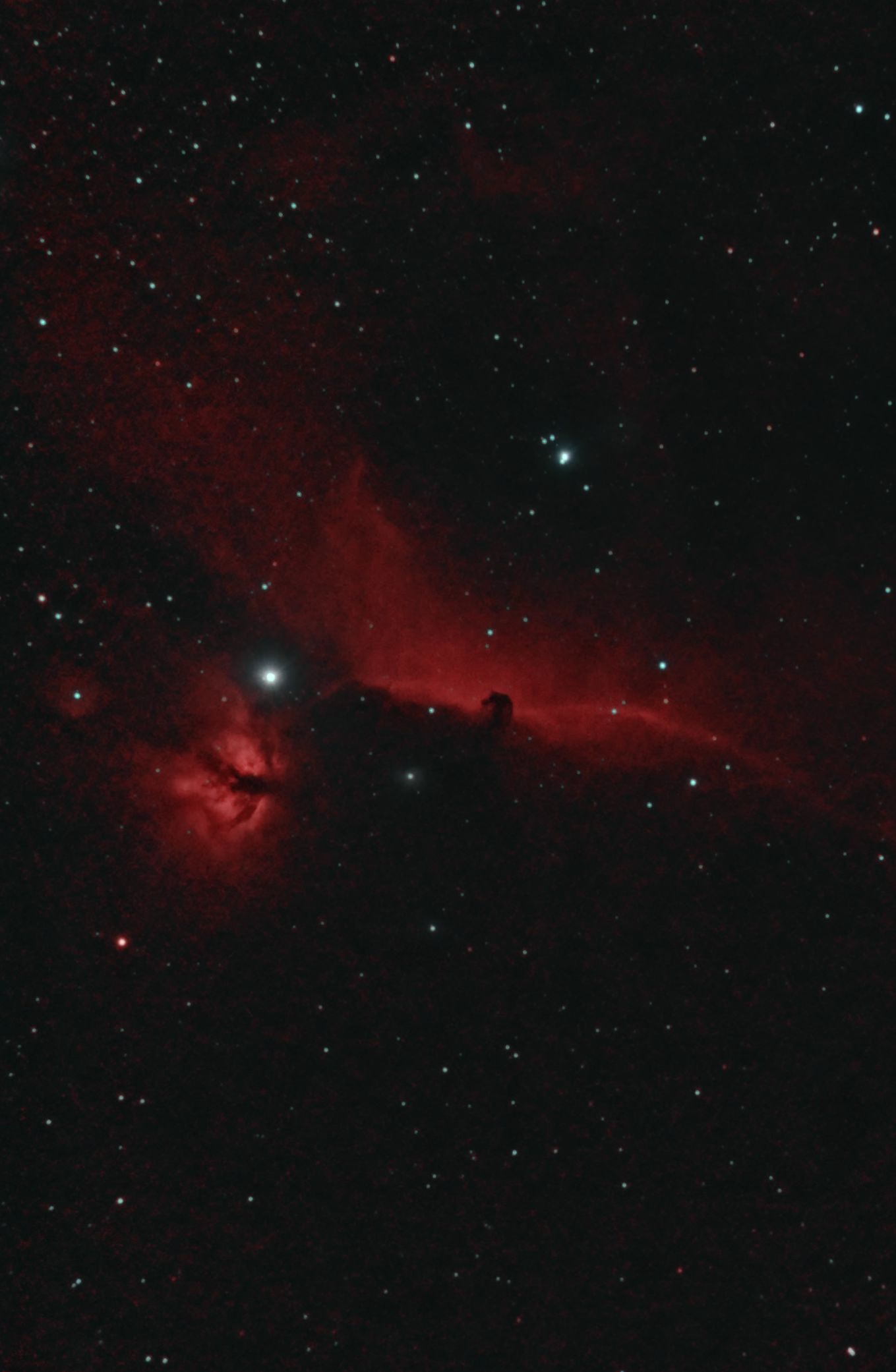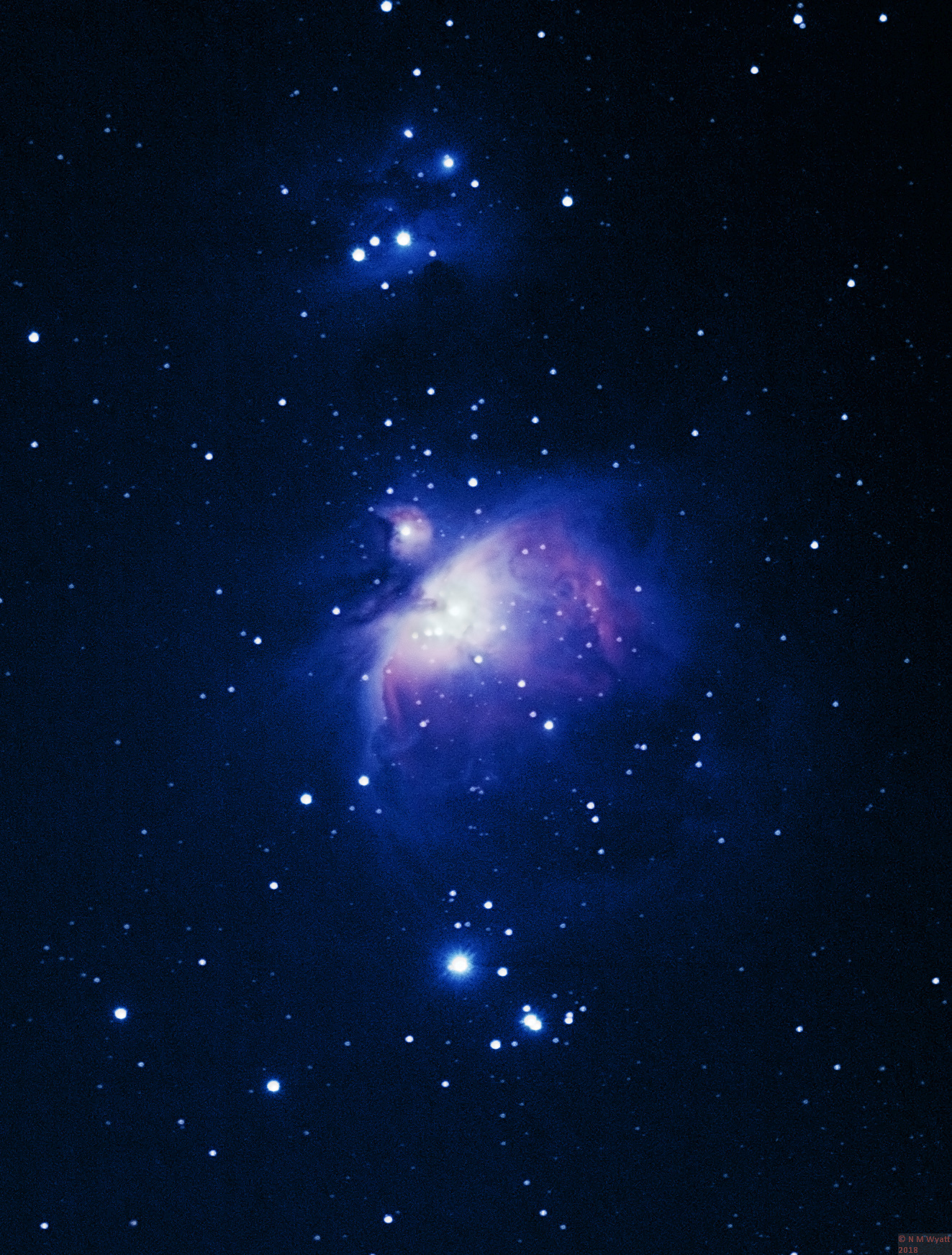The bright and symmetrical constellation of Orion is probably the most recognisable grouping of stars in the sky.It is easy to photograph - the picture below is a stack of ten images using Deep Sky Stacker, but they are each just 2-second exposures at ISO800, something most bridge cameras with a manual mode are capable of.
A short exposure image of Orion
Naturally longer exposures mean more detail. With the exceptionally bright, red star of Betelgeuse at top left and blue Rigel at bottom right Orion is unusual in that many of its stars are actually related. Much of the constellation is made up of young, blue stars. As well as stars, a long exposure photographs also shows various areas of nebulosity, especially around Orion's 'belt' and 'sword'. The picture below also shows a hint of a a semi-circle of red nebulosity at left, centred on the sword. This is 'Barnard's Loop' and is the final trace of an ancient supernova. Unfortunately the lens used has stretched stars away from the centre of the image. This can be addressed by closing down the lens aperture a couple of stops and increasing the exposure to compensate.
The constellation of Orion showing several nebulae
The Orion and Running Man Nebulae
To the naked eye, Orion's 'sword' appears to be three stars in a line. Look carefully and the central star appears a bit fuzzy, this is M42, the Orion Nebula. It is a huge cloud of gas brightly lit by a concentration of bright, blue, young stars. Right in the heart of the nebula are four quite distinct stars known as the 'trapezium'. Just above the Orion Nebula is a fainter, bluish cloud of gas, named for the dark silhouette of a 'Running Man' visible against it.
The Orion Nebula, M42, with the Running Man Nebula above
The Flame and Horsehead Nebulae
The star Alnitak lies at the left hand end of Orion's three-star belt. Although the star is blue, it brightly irradiates some clouds of gas that glow red. Other clouds of darker gas make striking shapes against the red clouds. The flame nebula is very bright and obvious, it is relatively easily seen through a telescope. It isn't hard to see how its gets its name.
In a line down from Alnitak the other nebula is much fainter and the tiny 'horsehead' shape that gives it its name is only a dark smudge even in powerful telescopes. The image below is a stack of about 30 minutes worth of frames using an astro-modified DSLR, which is more sensitive to red light.
 The Flame and Horsehead Nebulas near the star Alnitak in Orion
The Flame and Horsehead Nebulas near the star Alnitak in Orion
Why not take a look at my 'Orion Page' on Padlet?





